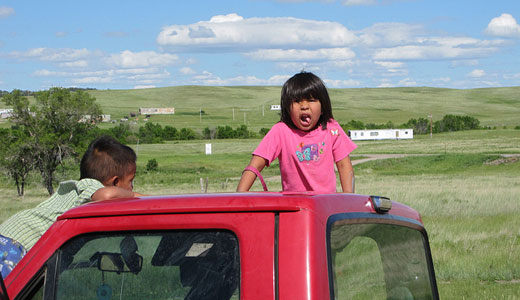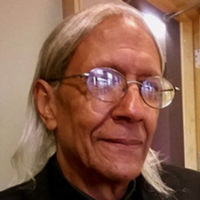
Recently, after South Dakota’s genocidal snatching of Native children received wide publicity, one of the state’s newspapers saddled up and charged out in the best cavalry style of the Old West cinemas to protect the circled wagons of the Department of Social Services (DSS).
The Mitchell, S.D., Daily Republic editorially asserted, “State wrongly demonized in ICWA debate.” However, demon is as demon does. “If the shoe fits … ” or “If it quacks like a duck … ” But enough old-time maxims. There is no getting around the abominable illegal actions of the state in flagrant violation of the Indian Child Welfare Act (ICWA) or the fact that said state gets $70,000 for each abducted Native child.
This journalist takes further particular offense at the paper’s statement that “this controversy has become a glorified shouting match between adults.”What? This canard trivializes a matter that is deadly serious – the genocidal forced assimilation of thousands of Native into white culture. This is no “glorified shouting match.”
Moreover, let’s look at how Native people are treated in other respects in South Dakota. A good start is the state’s reputation among Indian people nationally. In my conversations with other Native Americans, South Dakota is referred to as the most “redneck” state in the entire country because of its treatment of American Indians. It is the 1960s Mississippi of the Indian world. Native Americans from there relate stories of how they are followed inside grocery stores by employees because it is thought they are going to “steal a pack of meat.”
The pervasive racism is exhibited at basketball games when it’s Native teams vs. white players. White cheerleaders gyrate with signs saying that Indian students graduate “from high school to go to prison.”
Reports regularly issue of unequal treatment by law enforcement officers and even murder. In 2010, a young Oglala Lakota college student, Christopher Capps, was killed in a hail of bullets in Rapid City, S.D., by local police. An Indian DUI offender is given a five-year jail sentence, while a white man similarly charged is given probation.
Years ago young Indian men were arrested for alleged vagrancy in the wintertime so they could be made to shovel snow in the small towns. Native people are still racially profiled for alleged driving offenses or suspicion of drug involvement. The South Dakota’s overall population is 14 percent -15 percent Native American, but the state’s prison population is over 50 percent Native American, according to Albert Pooley, who heads the Native American Fatherhood and Families Association. This is an atmosphere of a police state, a demonic police state, directed against Indian residents.
In Rapid City, Native media reports that there is a pervasive fear of law enforcement among Indian families. Many relate experiences of being pulled over by police allegedly for drugs. Families coming from the grocery are required to put all their foodstuffs along the side of the road. Next, they are handcuffed and their vehicles are searched by police and drug-sniffing dogs. No drugs are found, no arrests are made. This happens most often with license plates bearing the number 65 (this number identifies the Pine Ridge Reservation on state plates).
Some families reportedly declined to talk with the media for fear of reprisals from law enforcement.
In the economic sphere, Native unemployment consistently averages 85 percent to 90 percent. State employment programs regularly pass over tribal members, the Rapid-City-based Native Sun Times reports. Last year the state’s Labor and Regulation Department partnered with Manpower, a national recruiting firm based in Milwaukee, to attract 1,000 out-of-state workers to fill positions in manufacturing, engineering, financial services and information technology. This was done despite the fact that Oglala Lakota College, an accredited higher education institution on South Dakota’s Pine Ridge Reservation, has graduates in at least two of those fields. There were many young educated Indians qualified and eager for employment in those areas, but the state decided to look elsewhere.
The governor’s office said that it looks for workers in other states if it cannot find South Dakotans to fill job openings. Obviously, the governor meant white South Dakotans. A friend of mine from the Rosebud Sioux Reservation, in Rosebud, S.D., has said it is the policy of the state government to “keep the Natives naked and starving.”
This is all part and parcel of the imposition of genocidal living conditions. Again, the state acts the demon.
The state even goes so far as to exclude reservation populations from employment data, according to a Native Sun Times report. The jobless rates on the state’s nine reservations are stunning, to say the least, with Pine Ridge at 89 percent. This exclusion is just another despicable example of how, in South Dakota, Indians literally don’t count.
South Dakota is a hotbed of virulent racism, perhaps without parallel anywhere else in the U.S. Yet, the Daily Republic feels South Dakota is being wrongly demonized. Imagine that!
Photo: Native children outside the Wounded Knee Museum on the Pine Ridge Reservation in South Dakota. Ben Piven CC 2.0












Comments